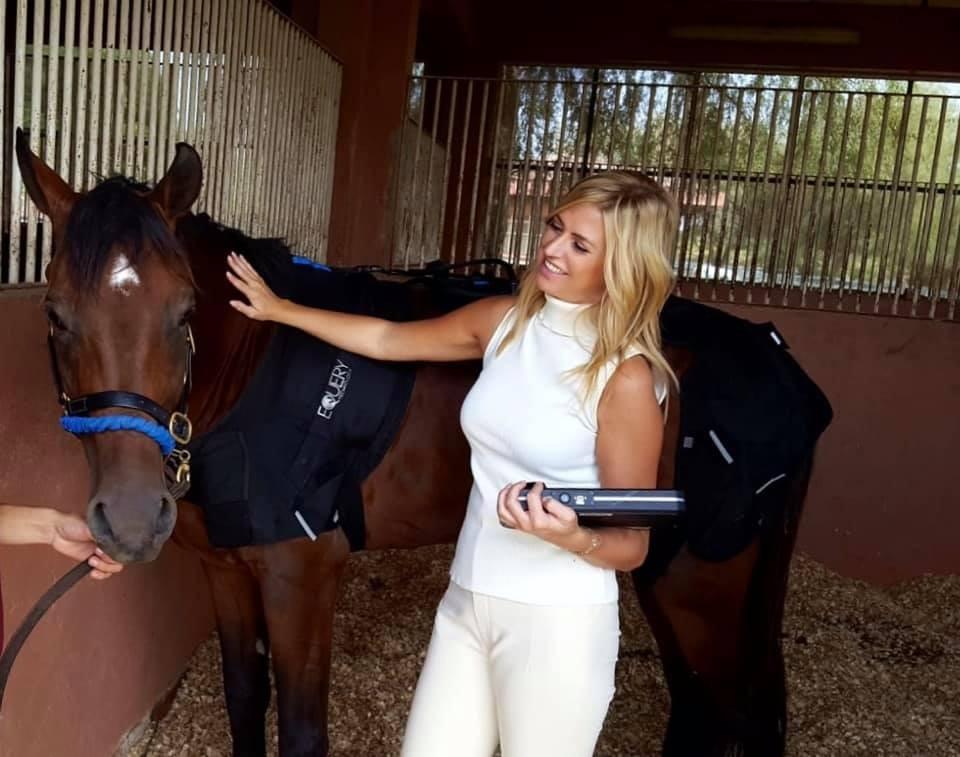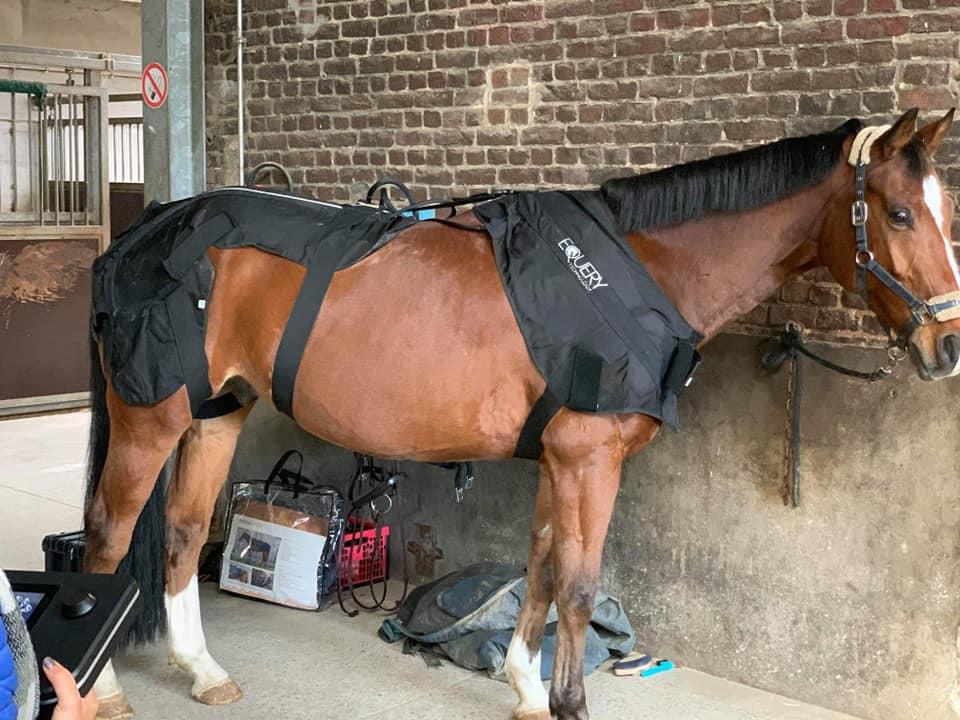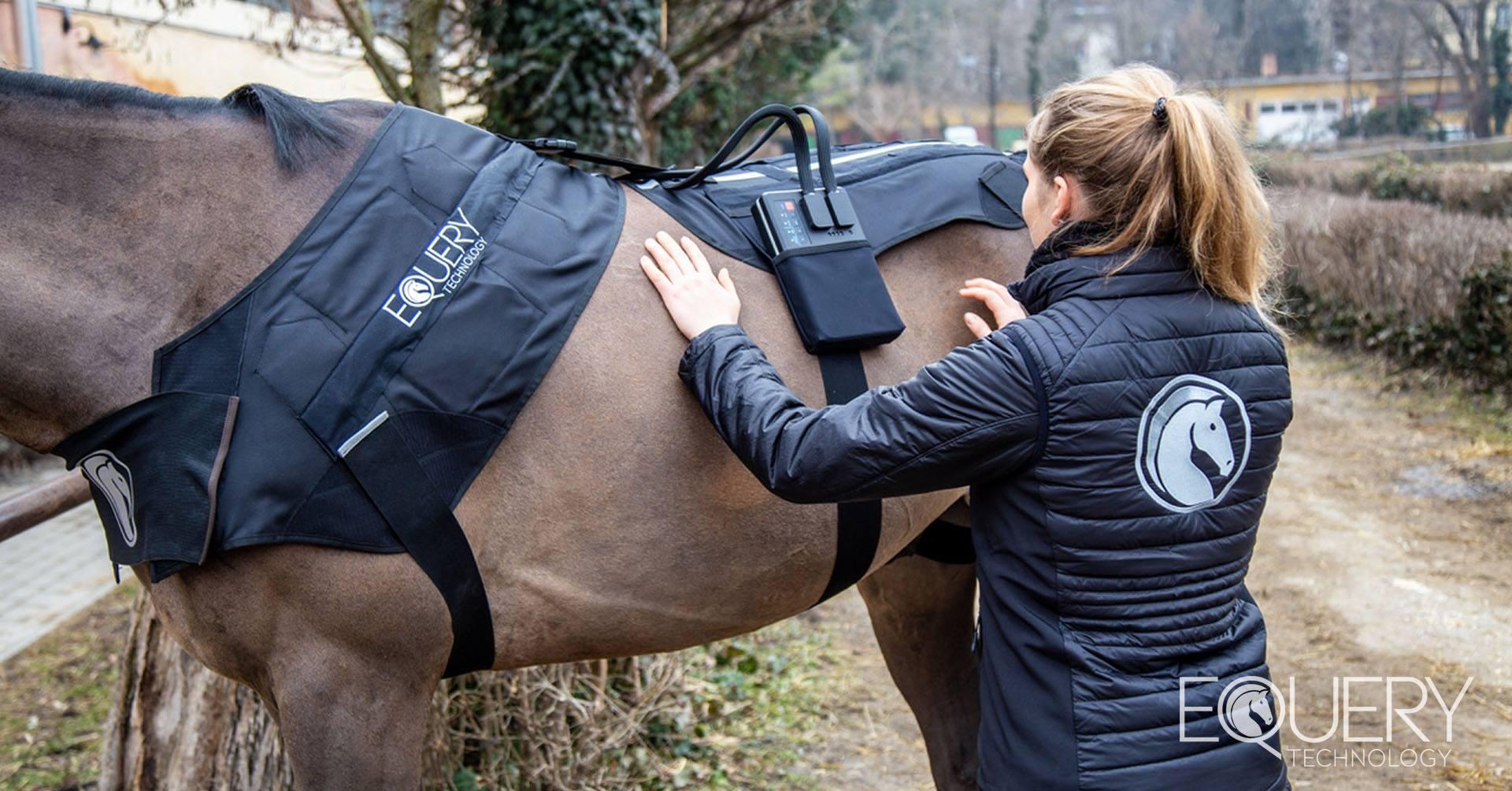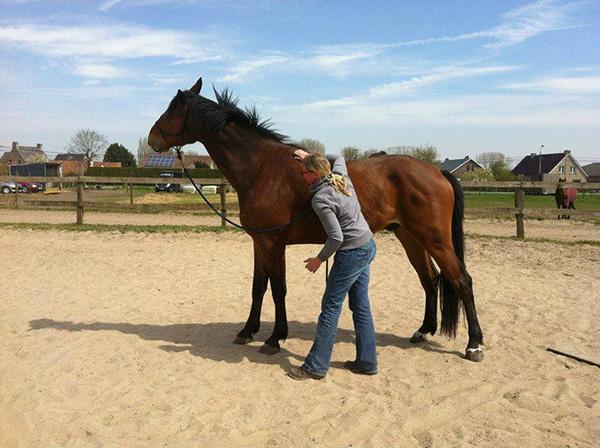

What is the difference between electrical muscle stimulation and magnetic electro therapy?
The significant difference is that electrical muscle stimulation effectively contracts the muscles at the muscle fiber level. This is something that is scientifically impossible to do with magnetic electro therapy.
Magnetic electro therapy
Magnetic electro therapy uses a permanent magnet to create a low static magnetic field. It's somewhat comparable to the alternative medicine practice of electro magnetic therapy where one creates a magnetic field generated by an electrical powered device.
The therapy itself does not use impulses to stimulate muscle and it operates at a much lower frequence, which makes it impossible for the magnetic field to contract muscles. In other words, although it can be beneficial for your horse, magnetic electro therapy can only be used to sooth superficial muscles and calm connective tissue.
Electrical muscle stimulation
The EMS technology used in our Equery suit builds new muscles and stimulates existing deep muscle fiber (red or white). Equery developed different programs to, on the on hand build muscle and relax muscle fibers, but also to treat Kissing Spine, lameness and muscle atrophy. Furthermore, the suit enhances blood flow and boosts your horse's metabolism.
Our EMS technology and the Equery suit are unique in the equine world.
*This article was created in collaboration with Michèle Thissen, Equery distributor for the United Arabic Emirates & The UAE Showhub.

At the end of August in Cambridge, they rewarded the research plan of Anna Mokry & Lisa Woord with the very first VAHL Award for promising future research in Europe (ECVSMR).
The research
Horses wanted!

EMS research in collaboration with Ghent University
VAHL Award for promising research
Equery: muscle building, training & rehabilitation
Horses wanted
Interested in participating in this study with your horse?

She has been running around Belgian racecourses since she was a child, but besides trotting, Delphine is also active in show jumping. By being regularly confronted with injuries, rehabilitation, training schedules and alternative therapies herself, her interest in rehabilitation techniques grew. In order to increase her knowledge, she studied and worked in France and America for a while.
- A 7-year-old stallion with a tendon injury who has been standing on the pasture for three years.
- A 5-year-old stallion who has little muscle in the front and suffers from a foot turning outwards. He has been standing still on the pasture for a year now.
- A 3 year old stallion who is not saddled yet and has to start from scratch.
